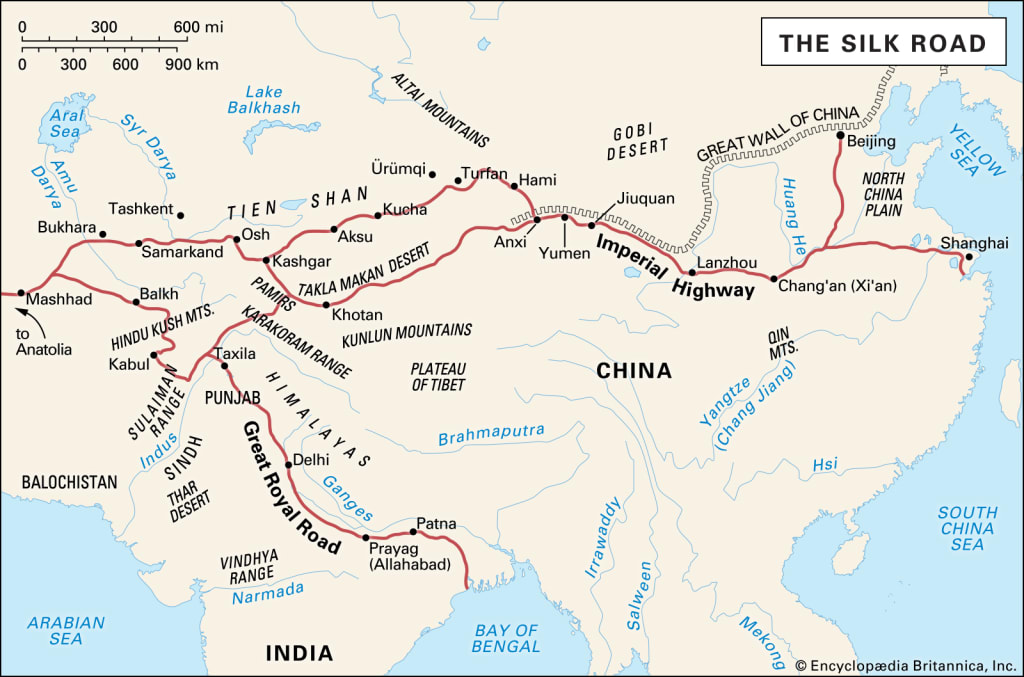
In a highly industrialized country, the production of steel and heavy machinery has found a lucrative market on the new Silk Road, and this has pushed Chinese production back to high-value goods.
The revitalization of trade routes on the old Silk Road linking China and East Africa is seen as a sign of China's commitment to Africa by Chinese leaders. In 2013, China under President Xi Jinping began restoring the historic Silk Roads as part of a $ 900 billion plan known as the One Belt, One Road (OBOR). The decision follows agreements signed with the state of Victoria in 2018 and 2019 in partnership with China's Belt and Road Initiative (BRI), called the 'New Silk Road', a major infrastructure program aimed at facilitating international communication.
The route is a series of ancient trading networks that link China with the Far East to European and Middle Eastern countries. Also known as the Belt and Road Initiative, Belt and Land Route, Maritime Silk Road, and Sea Route, which will connect China, much of Asia, Africa, and Europe, and other projects in Latin America, the Arctic, cyberspace, and region. Silk Road, also known as Silk Road, is an ancient trade route linking China with the West and transporting goods and ideas to two major civilizations, Rome and China.
Silk Road was a network of trade routes connecting China with the Far East and the Middle East and Europe. The Silk Road network was an ancient trade route established by the Chinese Han dynasty around 130 BC, which connected the region with the ancient world trade between 130 BC and 1453 AD. When the Han dynasty opened western trade in 130 BC, Silk Road operated until 1453 AD when the Ottoman Empire closed trade with China.
Silk Road was a network of trade routes linking East and West and was the key to the economic, cultural, political, and religious connections between the two regions from the 2nd century BC to the 18th century. The Silk Road is based on the well-paid silk trade that grew in China, [10] [11] which is the main reason for linking these trade routes with a larger continental network. Silk Road Silk Silk Road is also known as the Silk History section of China, Southeast Asia, the Indonesian Archipelago, the Indian Subcontinent, and the Arabian Peninsula to Egypt and Europe.
The first Silk Road originated in the western expansion of the Chinese race between 206 BC to 220 AD and formed a trading network with Central Asia today (Afghanistan, Kazakhstan, Kyrgyzstan, Tajikistan, Turkmenistan, and Uzbekistan) to modern-day India and Pakistan. in the south. The three routes run from Xinjiang Uygur Autonomous Region to Pakistan, India, and Rome. Indeed, the Silk Road in northwest China and the two trade routes in the Southwest China Sea contributed to land development. Many different types of goods and travel networks are sold on Silk Road, and the name came to be popular because of the silk of China west of Rome.
As you may have heard, the Silk Road is an ancient trade route that has traveled from China to the West since the time of the Roman Empire. During the Han dynasty, Silk Road opened trade between the Far East and Europe and China continued to supply goods and services on its routes. Trade near the Silk Road Economic Belt includes fruits, vegetables, cattle, grain, leather, leather, tools, religious objects, works of art, gemstones and metals, language, culture, religious beliefs, philosophy, and science.
The food belongs to this list of travel ideas and strategies: Apples scattered from the steppe belt to present-day Kazakhstan in prehistoric times, oranges from China transported the Mediterranean by sea and the grapes reached the western hills of Silk Road in China. This is a good idea for easy travel, and the commercial sidewalks along Silk Road were. The closure of the Silk Road introduced the Age of Discoveries (1453-1660 AD), also known as the Age of Discoveries (1453-1660 AD), described by European explorers who went to sea and mapped new waterways to change world trade.
As Europeans became accustomed to goods from the East, Silk Road was closed, and traders had to find new trade routes to meet demand. The man was credited with building Silk Roads and opened the first route from China to the West in the 2nd century BC and was sent in 139 BC by Han Emperor Wudi in the West to find an alliance with China's enemy Xiongnu but was captured and imprisoned by Xing Nu. After victory in the Cold War between the Han Dynasty and Xiongnu, a war in which Chinese forces established themselves in Central Asia and established the Silk Road as an important international trade route.
Silk garments are one of the earliest materials for the construction of trade routes between Europe and the Far East. By controlling the eastern trade routes that were part of the Silk Road, the citizens of the Roman Empire achieved new luxury and prosperity in their homeland. Although the name has a clear connection with it, the term "silk road" was originally coined only in 1877 when German geographer and historian Ferdinand von Richthofen used it to describe trade routes.
About the Creator
Rashmi Dahal
Hello everyone!





Comments
There are no comments for this story
Be the first to respond and start the conversation.